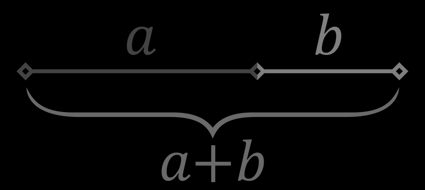Golden Ratio Calculator
The golden ratio calculator will calculate the length of the parts into which you need to divide a segment to obtain the golden ratio. Before we move on to actually computing the golden ratio, let's discuss what the golden ratio is all about. In what follows, you can find all the knowledge you need!
You can also check out the proportion calculator if you want to learn about ratios in general.
Golden ratio definition
The golden ratio (also known as the golden section or golden proportion) arises when a segment is divided into two parts — the proportion of the longer to the shorter part must be the same as the proportion of the whole segment to the longer part. That is, if the longer part has length and the shorter part has length , the golden ratio formula reads:
To compute the value of the golden ratio, you need to solve the equation above for . It's convenient to rearrange it as
Thus, in the end, we only need to solve for the quadratic equation . We do this by standard methods and discover that the value of the golden ratio is equal to , which is approximately . This number is often denoted by the Greek letter .
🙋 The golden ratio coincides with the limit of the ratio of consecutive Fibonacci numbers! Is that magic? Learn more with the Fibonacci sequence calculator!
We now know what the golden ration is and how to compute its value, so let's discuss how to verify if some two given lengths obey this divine proportion.
How do I check to see if two segments are in the golden ratio?
Here are the step-by-step instructions to help you figure out if two segments are in a golden ratio:
- Find the length of the longer segment and label it
a. - Find the length of the shorter segment and label it
b. - Compute
a/b. - If the proportion is (approximately) equal to
1.618, your segments are in golden proportion.
You can also use Omni's golden ratio calculator to do the job. Although any ratio calculator can help you with that, our golden ratio calculator deals with this issue specifically, so you won't find a better tool!
How to use this golden ratio calculator?
Omni's golden ratio calculator couldn't be any more user-friendly and straightforward. It has three fields, corresponding to the three lengths that appear in the formula for golden proportion. And you only need to enter one of them for the remaining two to be computed automatically. Isn't that terrific?
Golden rectangle
The golden rectangle is a rectangle whose side lengths obey the golden ratio, i.e., the proportion of its length to width is . This rectangle is often seen in art, as it is believed to be the most pleasing to the human eye of all rectangles. The golden rectangle calculator is a convenient way to find the sides of a golden rectangle instead of working them out by hand.
Why is the golden ratio important?
The golden ratio has always had particular relevance in science and art thanks to its properties and appearance. Talking about math:
- A golden rectangle can be split into two smaller golden rectangles (it maintains its proportions).
- The golden ratio deeply correlates with the number
5. This number appears in its definition (φ = (1 + √5)/2) and the pentagon as the ratio between diagonal and side.
In arts, the golden ratio appeared more recently: Dalí, for example, used this ratio in many of its works.
Where can I find the golden ratio in nature?
Many historical and contemporary sources claim that the golden ratio is rather ubiquitous in nature. Some examples are:
- The growth pattern of leaves;
- The geometrical surfaces of some vegetables and shells;
- The proportions of the bones of some animals.
However, while we can't deny the presence of geometrical patterns in nature, we can't confirm the exactness of the proportions of the examples above: some present huge variations, while others only approximate the golden ratio.
FAQs
What is the golden ratio?
The golden ratio is a ratio between two quantities that we can also find when we compute the ratio between the sum of these quantities and the greater of the two. Numerically speaking, the numbers a and b are in the golden ratio if:
a/b = (a + b)/a
The value of this ratio is approximately equal to 1.618.
What is the length of the sides of a golden rectangle with diagonal 1?
The sides of a golden rectangle with diagonal d = 1 are a = 0.850651 and b = 0.525731. To find these results:
-
Use the Pythagorean theorem to find the length of the side
bas a function ofa:b = √(1 - a²). -
Compute the length of the side
aknowing thata/b = φ:a/b = φ
a/√(1 - a²) = φ
a = √(φ²/(1 + φ²)) = 0.850651 -
Compute the length of side
bwith the following formula:b = a/φ = 0.525731
That's it!
